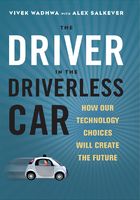
第1章 PREFACE
Not long ago, I was very pessimistic about the future. I was worried about hunger and poverty, disease, overpopulation. I believed that the world would run out of clean water and energy and that we would be fighting world wars over scarce resources.
Today, I talk about this being the greatest period in history, when we will solve the grand challenges of humanity and enter an era of enlightenment and exploration such as we saw in my favorite TV series, Star Trek. Yes, I grew up dreaming of tricorders, replicators, and androids and wanting to be an astronaut so that I could join Starfleet Academy. Didn't all the people from my generation, of the '60s?
At Stanford, Duke, and Singularity universities, and now at Carnegie Mellon, I have spent the past six years researching the advances in technology that are finally making science fiction a reality. It truly is amazing what is possible, as I will explain in this book. But I have come to realize that reaching Utopia will take vigilance and effort: like the course of a game of snakes and ladders, our path is strewn with hazards.
My research has made me acutely aware of the dangers in advanced technologies. These are moving faster than people can absorb change-and offer both unprecedented rewards and unpredictable hazards.
As a society, we can make amazing things happen; and the more we understand, the better our decision making will be-and the greater the odds that we head toward Star Trek. Today's technology changes are happening so quickly and are so overwhelming that all of us-including technologists-can benefit from access to new tools for considering and managing them. I wrote this book with the help of my good friend and writing guru, Alex Salkever, in order to provide such tools, because I believe in the power of choice and the greater judgment of involved citizens. We hope that it will help you deal with the challenges that new technologies raise now and in the future.